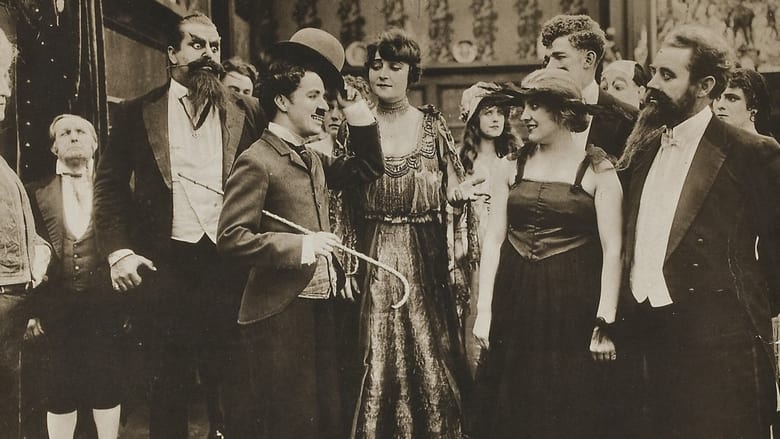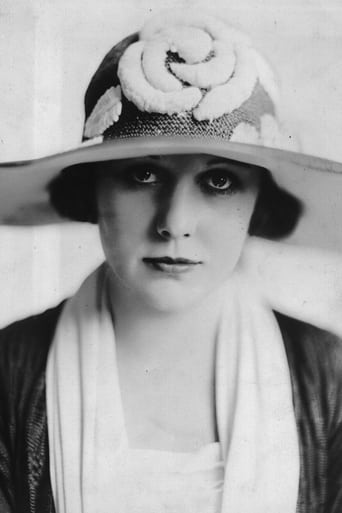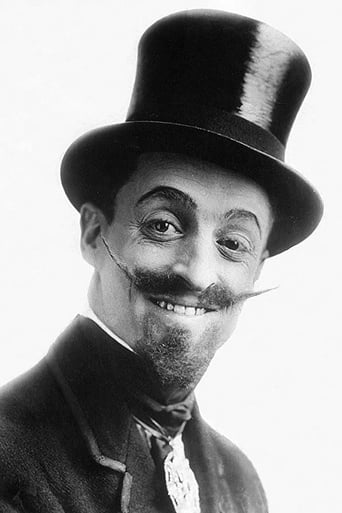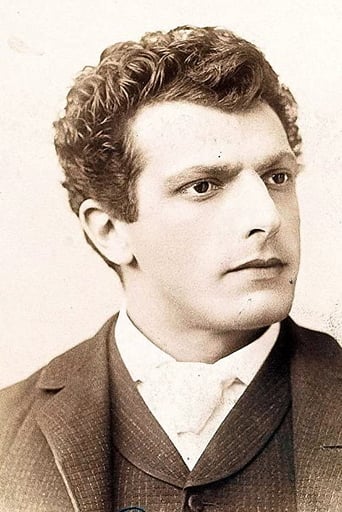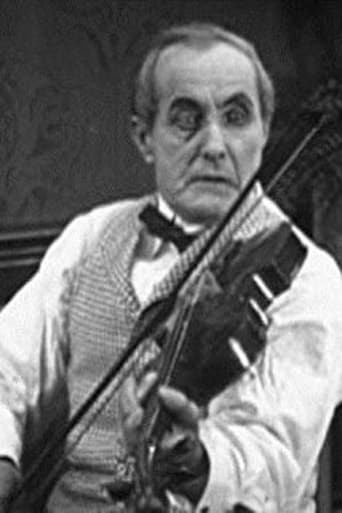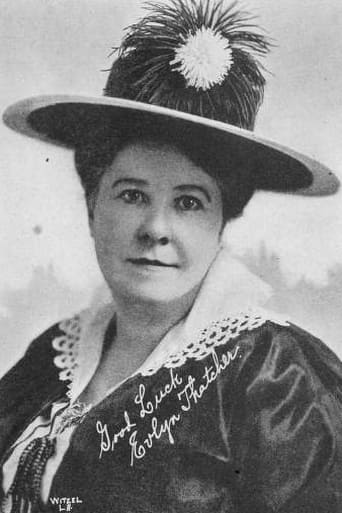A tailor's apprentice burns Count Broko's clothes while ironing them and the tailor fires him. Later, the tailor discovers a note explaining that the count cannot attend a dance party, so he dresses as such to take his place; but the apprentice has also gone to the mansion where the party is celebrated and bumps into the tailor in disguise…
Similar titles
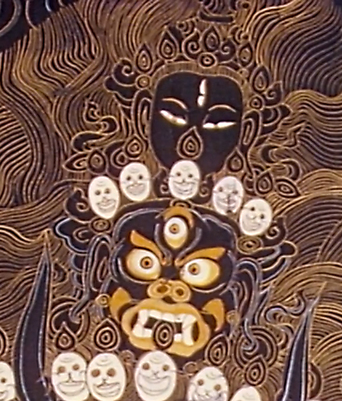
Reviews
Film Perfection
Although it has its amusing moments, in eneral the plot does not convince.
Very interesting film. Was caught on the premise when seeing the trailer but unsure as to what the outcome would be for the showing. As it turns out, it was a very good film.
There is definitely an excellent idea hidden in the background of the film. Unfortunately, it's difficult to find it.
In the cinema of Charlie Chaplin, silly facial hair was like a kind of comedy insurance. If all Charlie's antagonists looked suitably ridiculous, the pratfalls would fall that little bit harder and the laughs would be that little bit louder. The Count is a good picture for silly facial hair, from the flapping fuzz of the band leader, to the upturned curiosity of Count Broko, to the wispy behemoth adorning Eric Campbell. Chaplin's reliance on beards and moustaches here gives a clue as to the fact that this is not among his best Mutual Pictures.It appears he was aiming for here a story of broader social goings-on, with a plot that is funny in itself as Chaplin and Campbell double-cross each other, both trying to pretend to be a count so they can get in with Edna Purviance, until the real count turns up, and mayhem ensues. It's a good idea, but Chaplin is at this stage focusing on milking each scene for potential gags, rather than making the whole thing flow seamlessly. Consequently The Count has a rather disjointed feel, lurching awkwardly from a boss/apprentice set-up of the kind with which Chaplin normally sustained a whole picture, to an elicit meeting between Chaplin and some frumpy cook, to the rather contrived situation in which counts are impersonated. Neither the plot nor the tramp character really seems consistent, and it runs almost like a Charlie Chaplin clip show.But Chaplin was nevertheless at the top of his game as far as pure comedy went, and there are some of these "clips" are pretty good. The opening scene is a great example of the triumph of absurd ideas over broad slapstick, with Charlie as a tailor who measures a woman's ear, smile and finger. There's a very smooth and pretty ballroom scene, punctuated by a few arse-kicking gags. In the frantic finale there is a rather subtle but very funny juxtaposition, as the band continues to play gently in the background as the other characters run around and fight each other in the foreground. Luckily composer Carl Davis, in his new score for the Mutual films, picks up on this and keeps going with the sedate band music rather than a typical chase theme. And those beards, backups though they may be, do work as a touch of comic sparkle.So yet again, we come to the all-important statistic – Number of kicks up the arse: 9 (4 for, 5 against)
In 1914 and early 1915, Chaplin did his first comedy shorts. In general, they were pretty awful--with almost no plot and consisting of him mugging it up on camera and hitting people. However, in 1915 he left Keystone Studio and began making better films with Essenay (though there are some exceptions) and finally, in 1916, to Mutual where he made his best comedy shorts. These newer films had more plot and laughs and usually didn't rely on punching or kicking when they ran out of story ideas.This film isn't bad, but it does seem a bit hard to follow thanks to a lack of title cards in the film to explain the action. My assumption is that the original version had them but they weren't in the prints used to make THE ESSENTIAL CHARLIE CHAPLIN COLLECTION set. Charlie is a tailor's assistant and his boss finds an invitation for the county to a fancy dinner. The boss decides to go in the count's place so he can try to marry the rich young lady throwing the party (though what woman in her right mind would want this creep?). Charlie also goes to the same home, but to visit with the cook. Later, he sneaks away and crashed the party and finds his evil boss putting the moves on this lady. Shortly afterwords, the REAL Count shows up and the ruse is exposed.Like another reviewer stated, this is pretty reminiscent of THE RINK, though THE RINK is a clearly superior film because THE COUNT has very few laughs. An interesting story but just not all that funny. I did, however, love Chaplin's physicality in the film--he was incredibly agile and watching him move was a treat.
This two-reel comedy, one of a dozen Chaplin made under his Mutual contract, offers a story line he followed time and again throughout his career: lower class Charlie fakes his way unto upper class society under an alias, fools people for a while, then wreaks havoc. Sometimes Charlie's fraud is deliberate (as in this film), while on other occasions people mistake him for something he is not, but whatever the case the idea was one Chaplin used regularly, starting with an early Keystone of 1914, Caught in a Cabaret, and recurring in other short comedies of 1915-16 such as A Jitney Elopement and The Rink. The premise turns up as late as 1940 in The Great Dictator, although in that instance the farcical aspect of the plot has turned into a darker political statement. Without getting overly analytical about the matter, it would appear that this scenario held some sort of deep meaning for Chaplin, who grew up in poverty and yet wound up wealthy and celebrated, hobnobbing with some of the most famous people in the world. Was this man insecure about the wealth and power he'd earned? It's not so far-fetched to wonder if Chaplin, recalling his roots in the London slums, might have sometimes felt like a fraud when he found himself dining with the likes of Winston Churchill, Lady Astor or Bernard Shaw.Anyhow, getting back to the matter at hand: The Count stands as one of Charlie's lightest and most playful short comedies, perhaps not one of his very best but highly enjoyable nonetheless. There's a lot of good byplay between pint-sized Charlie and his most memorable "heavy," the enormous Eric Campbell, who wears an outrageous beard this time around. Campbell plays a tailor and Charlie is his assistant, soon fired for ineptitude; but before long the former apprentice gets mixed up in the conniving tailor's scheme to impersonate a count, in order to court a wealthy heiress (Edna Purviance). I especially enjoyed the bit when Campbell explains his scheme to Charlie, and punctuates the speech with his elbow in a "Get it?" gesture, until Charlie finally slides a wooden chair into place to protect himself. Through various complications Charlie himself is mistaken for the count, and receives royal treatment at a grand party at Edna's mansion, while his boss is forced to serve as his assistant. The party is the setting for a number of amusing comic set-pieces, including a dinner of spaghetti and watermelon (when did you last see these dishes served together?), and a dance in the ballroom. For me, the dance is the film's highlight, as it displays Chaplin at the peak of his physical skill, sliding and gliding about with almost supernatural agility. Only Mickey Mouse could move so well, and with such comic grace!The Count may not rank with Chaplin's greatest short comedies, but if any of his contemporaries had made this same film it would probably be regarded as something special. It's hard for me to be objective about this particular movie because The Count was one of the first Chaplin comedies I ever saw, way back in grade school, when I borrowed an 8mm print from my local library, threaded it up on my projector, and threw the beam onto a wall of my room. It was the first inkling I had that Chaplin's reputation as a great comedian was so well deserved, the first time I said to myself: "Hey, this guy really IS funny!"
Charlie Chaplin goes to a party and he pretends to be a certain count. He doesn't act like a count but they all believe he is one until the real count shows up.This is another fine Charlie Chaplin movie where he does some nice satire on higher society. It starts a little slow but once they are on that party it gets very funny.
Top Streaming Movies











